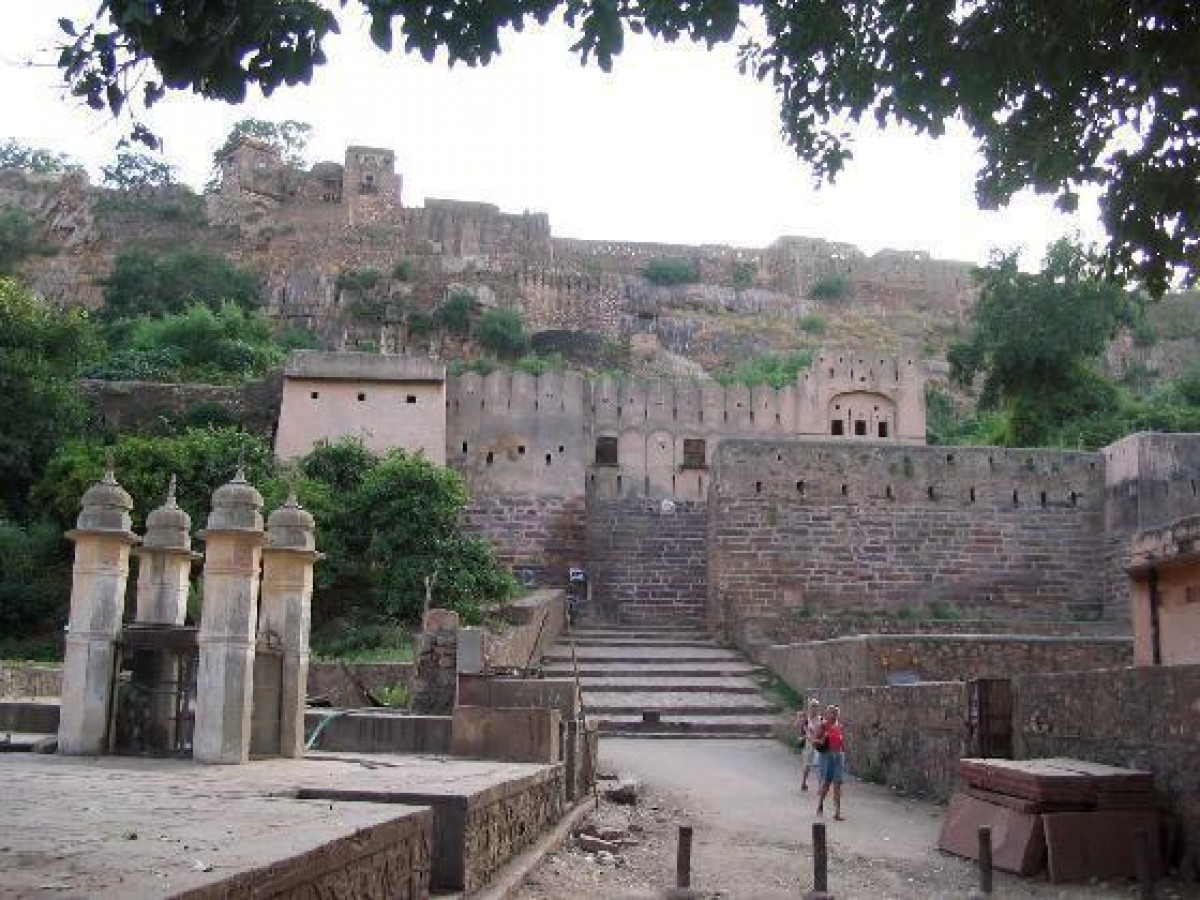Popular for its wilderness all over the world, there are many reasons wildlife enthusiasts visit Ranthambore National Park again and again! Thousands of people travel to Ranthambore as it has many attractions like its history, geography, and rich flora and fauna which draw their attraction. Situated within the edge of the park, Ranthambore National Park got its name actually from the fort as there are two hills running close to the proximity of each other namely the Rann Hills and the Thambore Hills. Ranthambore is situated on an isolated hill which is known as Thambore Hill. The Word came from the Hindi language, ‘Istambh’ which means the pillar. And, that’s the reason why the fort is also known as the ‘Pillars of War’ in history!
The Ranthambore Fort covers an astonishing view of the Ranthambore Wildlife Park. Also, Under the Hill Forest Series of Rajasthan, the Ranthambore Fort is now a part of UNESCO’s World Heritage Site.
About Ranthambore Fort:
Sprawled over an area of 7 kilometres in circumference including an area of nearly 4 kilometres, The Ranthambore Fort comprised many buildings out of which only a few have survived the ravages of war and time. Giving an idea of old grandeur, among the few remaining ruins are the Badal Mahal, Two Pavilions, Hammirs Court, 32 Pillared Chhatri, and Dullah Mahal.
Also, the fort has many cenotaphs, mosques, temples, step-well, barracks, and gates. Around the fort, one can see many old ruins with remnants of walls which are the testimony of the past. There are two rain-fed reservoirs in the fort which are used for water supply in the fort. And, the fort is bounded by massive stonewalls which are strengthened by the bastions and towers. All the stone for masonry work was obtained from the fort area itself, which was later converted into water storage ponds.In addition to this, the Trinetra Ganesha Temple is a major attraction nearby and people from faraway places come to visit this place.
Lesser Known Ranthambore Fort Historical Facts!
The History of the Ranthambore Fort orbits around SawaiMadhopur. Bounded by the Aravalli and Vindhyan Ranges amidst the vast and arid denuded tracts of Rajasthan, SawaiMadhopur town is identified by the Ranthambore National Park and the Ranthambore Fort.
During whose reign the fort was built is difficult to name but is believed to have been built during the 8th century by the Chauhan rulers and came into existence after Prithvi Raj Chouhanwho was the last Hindu King of Delhi. His descendants came to Ranthambore and made this place their capital and the actual fame was later known during the ruling period of Raja Hammir Dev. At different points of time in history, the fort was attacked by a number of big powers like Bahadur Shah of Gujarat, Qutub-ud-din, FerozTughlaq, and AllauddinKhilji were prominent.
Later, the fort was finally captured by the Mughals who earlier used the place for staying purposes and later as the prison fortress. In the 19th century, the fort was given back to the Maharaja of Jaipur and remained with him till the time India got independence in the year 1947.
Consequently, to visit the historical Ranthambore Fort, you must book Ranthambore Tour Packages from our website so as to experience the joy here and the adventurous wildlife thrill at the Ranthambore National Park.
